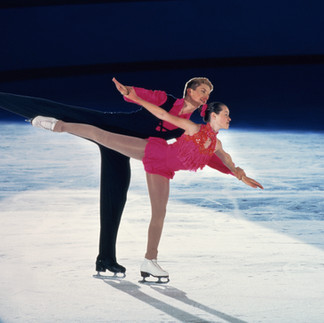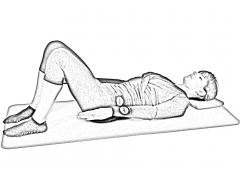For decades, elite athletes have sought out cutting-edge training methods to gain an edge in their performance. Strength, endurance and agility are critical for many sports like football, running, tennis, basketball and hockey but there's another essential component that often gets overlooked - stability. Good posture and core/shoulder stability exercises create pelvic, spinal and shoulder stability. Without these, injuries can occur - an athlete's worse nightmare.
I only have to look at my partner who's a runner and cyclist to see how he has benefitted from this. When we met 7 years ago (what a blessing) he was quite new to running regularly and was experiencing a few niggles - Achilles tendonitis, and calf strain. They miraculously have gone. I credit better posture.
Why do Elite Athletes do Pilates?
Joseph Pilates, the founder of the method in the 1920s, designed exercises for injury prevention and rehabilitation. His first major clients were dancers.
Given the physical demands of elite athletes, it grew in popularity in the 1980s-1990s and was incorporated into the training programmes for:
Track and field athletes to improve posture and alignment
Gymnasts & figure skaters for enhanced control and flexibility
Footballl & rugby players for injury prevention and recovery
In 2009 while on loan to AC Milan, David Beckham said "I do an hour of pilates a day and fitness-wise I am the best I have been for a long time".
Optimum Posture, Efficient Movement
Good posture (Pic 1) means a strong core and balanced muscles around each joint, which enables efficient, pain- free movement, whilst also reducing the chance of injury. Poor posture (Pic 2) means a weak core and unbalanced muscles which causes unnecessary strain on muscles, resulting in possible pain and injury.
Pic 1. Good Posture Pic 2. Poor Posture - B, C & D
Master these for a Good Posture.....
Breathing: when you breathe in, aim to breathe wide and full into the sides and back of the ribcage. You'll notice the lower half of the ribcage expands in depth and width if done correctly. Then exhale, relaxing all the muscles of the ribcage.
Centering & neutral pelvis: engaging the deep abdominal, back muscles and pelvic floor together while keeping the low back in a neutral position. This refers to the position of your low back. It is a natural, small inward curve (Pic 1).
Ribcage Placement: ideally it should be directly over your pelvis when looking from the side, in sitting or standing. If you lie down, your upper back should rest naturally on the floor without arching away.
Shoulder Blade Placement: stability here is dependent on a finely tuned balance of several key muscles around the shoulder blade including upper/lower trapezius, and serratus anterior muscles.
Head & Neck Position: the natural curve of the neck (Pic 1) needs to be maintained. It is held here by the deep stabilising muscles of the neck.
Whole Body Stability, Injury Prevention
Stability makes the body more physically secure and stable. It creates the strong foundations for our body to stand and move from.
What you do in your downtime from sport can weaken these foundations and cause injury. Necks and backs can suffer if you slouch on a sofa or sit in front of a computer after vigorous activity, or spend hours looking down at your mobile phone. Other repetitive movements like hitting a golf ball for 5 hours, painting a ceiling, or hedge trimming can strain your shoulders. Ligaments can become overstretched causing pain and even injury. To rectify this you need to train the neck (Ex 1), shoulder (Ex 2) and back stabilisers (Ex 3).
3 Exercises for Better Stability
Swan - neck stability
Lie on your front, legs parallel. Find neutral pelvis by lengthening your tailbone away & engaging your centre. Imagine a peach under your chin and a laser beam from your crown to the wall opposite. Shine the beam up the wall as you hover your chest off the mat, no pressure into arms. Exhale to lift, inhale to lower. x 10
Breaststroke Prep - Shoulder stability
Arms by your side, neutral pelvis & core engaged. Keep your head down as you lift the shoulders to set them, gentle squeeze of shoulder blades as you lift both arms off the floor & turn your palms inwards. Lower hands, then shoulders. Low back stays still, core stays engaged. x 10
Hundreds - Pelvic Stability
Rest position set up. Engage core using pelvic floor cue or transverse abdominus cue, hover arms and pulse while maintaining neutral pelvis. x 10 breaths with pulses
Whether you're a recreational athlete looking to stay active or a professional aiming for peak performance, Pilates will help you to achieve your goals. The endorsements from elite athletes underscore its effectiveness in improving posture, control, stability, strength, flexibility, and injury prevention.
If you'd like to run faster or further, join my Rehab to Fitness Program for core stability and core strength exercises, designed to build those strong foundations safely and effectively.















Comentários